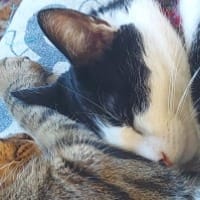Minecraft Education Edition is a version of Minecraft which was developed with educational use in mind. Based off of Minecraft’s popular Bedrock Edition, Minecraft Education Edition is used in classrooms all around the world. It's a fun and useful resource for teachers and students alike.
But although Minecraft Education Edition may be influenced by Bedrock Edition, there are still some key differences between the two. From game modes to mobs to the items available in-game, here’s a list of the top five differences between Minecraft Bedrock and Education Edition.
5 ways that Minecraft Bedrock edition and Education Edition differ from each other
5) Zombie Pigmen

Chart New Territories with the ultimate Minecraft Seed Generator!
Zombie pigmen are a neutral undead mob that can be found in Minecraft’s Nether dimension. This mob was renamed the zombified piglin in Minecraft Java and Bedrock Edition. In Education Edition, zombie pigmen kept their original name.
4) Code Builder

Code Builder is a feature in Minecraft Education Edition that can help students learn to code through a variety of activities in-game. Students can select one of three editors to use in-game. These editors are Microsoft MakeCod, Microsoft notebooks, and Tynker.
Once students have selected an editor, they will meet the Agent. From building to farming, this mob can be programmed to perform all sorts of tasks. Both the Code Building and the Agent are exclusive to Minecraft Education Edition.
3) Non-player Characters

Non-player Characters, also called NPCs, are passive mobs in Minecraft which students can interact with. NPCs can take on a variety of appearances in-game. All of these utilize the villager mob’s model as a base. An NPC’s appearance is just one of its many customizable features.
Players with world builder permissions can edit an NPC’s dialog, name, and appearance. This allows students to interact with an NPC for instruction, information, and even links to additional resources.
Although NPCs are technically available in Minecraft Bedrock Edition, they are only accessible to players in worlds with Education Edition enabled.
2) Classroom Mode
Classroom Mode is a feature exclusive to Minecraft Education Edition. It gives educators and students access to a variety of features which have been designed to help students interact in a controlled multiplayer game.
Some of these features include:
- The option of pausing the game for all players
- Toggleable weather
- Toggleable mobs
- Option to disable chat for all players
- Toggleable destructive items
- Modifying players’ ability to take damage
- Toggleable PvP damage
- Prohibiting world modification
1) Chemistry

One of Education Edition’s most fascinating features, Minecraft’s chemistry system is an excellent way for students to learn about chemistry. Players can use a variety of interactive features to do this.
By using blocks such as the Element Constructor and the Compound Creator, students can create elements and compounds based on their atomic structure. All 118 elements of the periodic table are included in-game.
Uncover new worlds with our Minecraft Seed Generator!

